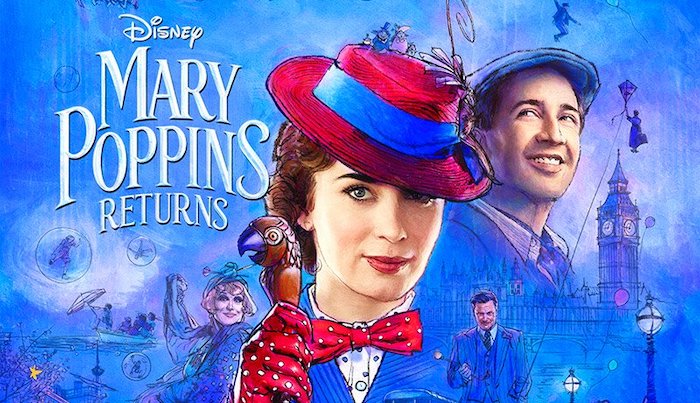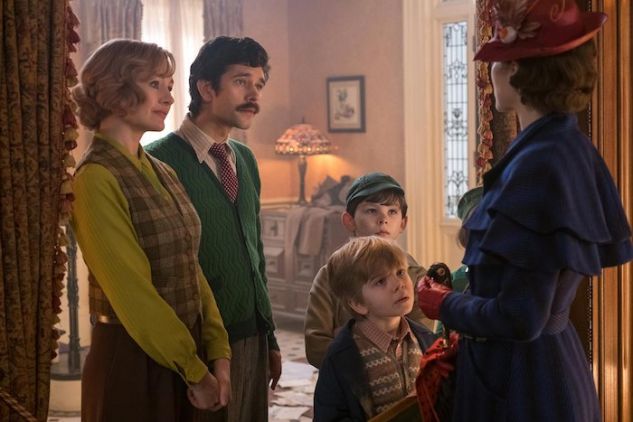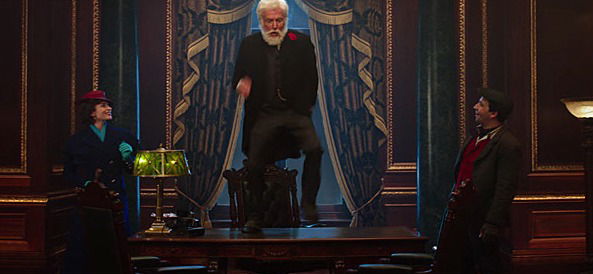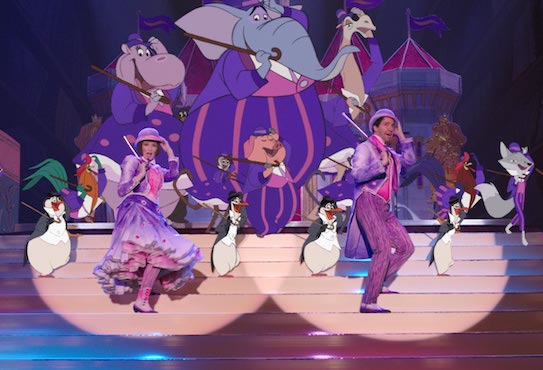Mary Poppins is one of those all-time classics that could never be duplicated, hence why Disney has not made a remake of it. Instead, it opted to create a sequel to the 1964 musical. And while you can never improve on something that’s practically perfect in every way, the film does revive some of that magic.
Mary Poppins Returns follows the grown-up Michael and Jane Banks in the “Great Slump” of the 1930s. After his wife’s death, Michael is struggling to hold his life together when the bank threatens to repossess the house. As if sensing the distress, their old nanny Mary Poppins comes down to help. At the same time, she works with Michael’s kids to help them get over the death of their mother. With the help of lamplighter Jack, she teaches John and Annabel to be more like kids again, and youngest Georgie to keep his wits about him and help his siblings out as they bring their family back together.
Emily Blunt is not Julie Andrews, and frankly, I would have been disappointed if they tried to make her that way. No, Blunt’s version of Mary Poppins is a little bit more sass and secret, a bit more playful and energized. She’s got the effervescence and the elegance but cheekiness feels sharper, more engaged with the children. I think it shows also in the sentimental song she sings. Andrews has “Feed the Birds” which is about the charity, but Blunt gets “The Place Where Lost Things Go” that directly connects to the kids and the loss of their mother. And while Andrews is the stronger singer, Blunt is still a great vocal talent and a lot of fun to watch.
Our new Burt, Lin-Manuel Miranda’s Jack is also a lot fun but I think lacks a bit of that instant charisma. Don’t get me wrong, Miranda has charm to spare but there’s nothing quite the instant connection Dick Van Dyke has with the audience. Miranda shows off some excellent singing and dancing chops, and Marc Shaiman even includes some of Miranda’s rapping skills in the bigger numbers. Jack also gets a romance with Jane Banks which…is a little forced but fine. As it’s a Disney movie, it never really goes anywhere.
Ben Whishaw and Emily Mortimer as Michael and Jane are both excellent in their roles. Whishaw is a perfect beleaguered parent struggling to keep it all together, and Mortimer is the fun but slightly ditzy aunt, though I wish she got more screen time. As far as our child actors go, Pixie Davies, Nathanael Saleh, Joel Dawson are strong, though they do get a little bit cheesy from time to time. Colin Firth is sort of a so-so villain but given that he gets very little screen time, it doesn’t really seem to matter.
The guest appearances are probably some of the best parts of the film. Meryl Streep continues to try make up for bad musical choices in Mamma Mia! by being a lot better in everything else. Her turn as Topsy, a fix-it maven whose world gets turns around every second Wednesday. Angela Lansbury pops in right at the end to sing a cute song about looking up, which honestly proves that she’s still got it after a long and storied career. Biggest surprise is Dick Van Dyke, who plays Mr. Dawes Jr, the chairman of Fidelity Fiduciary Bank, and can still sing and dance, which is probably my favorite part of 2018 on the whole.
I do have to say that sometimes it does feel like the movie is trying too hard to mimic the song structure of the first film. Mary Poppin’s first song in this film is “Can You Imagine That?” which feels like a successor to “A Spoonful of Sugar”. In the “animated” portion of the film, there is a song called “A Cover is Not a Book” which feels like it’s the film’s “Supercalifragilisticexpialidocious.” The relative-connection scene’s got “Turning Turtle” which seems to fill the spot for “I Love to Laugh”. And the iconic “Step-in-time” with all the chimney sweeps has a direct parallel in “Trip a Little Light Fantastic” with the lamplighters.
Still, the music by Marc Shaiman is a smartly put together score. It ties together parts of the old with the new in lyrics and in score, which to me is perfect. “A Cover is Not a Book” is probably my favorite song but “A Conversation” is also a very genuine and loving song that still makes me tear up. Overall, the soundtrack is lovingly put together in a way that elevates the film, and will become a new sing-along staple in a few short years.
The costuming and sets are what you would expect of a continuation of Mary Poppins – clean, sharp, whimsical and bright. The sweeping shots make London feel big but also cozy, and the animation section has a lot of energy and bounce to it. The whole vision, put together by director and choreographer Rob Marshall, feels like a stage play melded to the screen, the kind of spectacle that maybe isn’t authentic to P.L. Travers’ original, or even the original Disney film, but that fits into a kind of special category all its own.
Summary
Mary Poppins Returns is not quite as practically perfect as its predecessor but does have a lot of heart and style, with smart casting and musical choices to tie it all together in one big, flashy but sincere bow.






